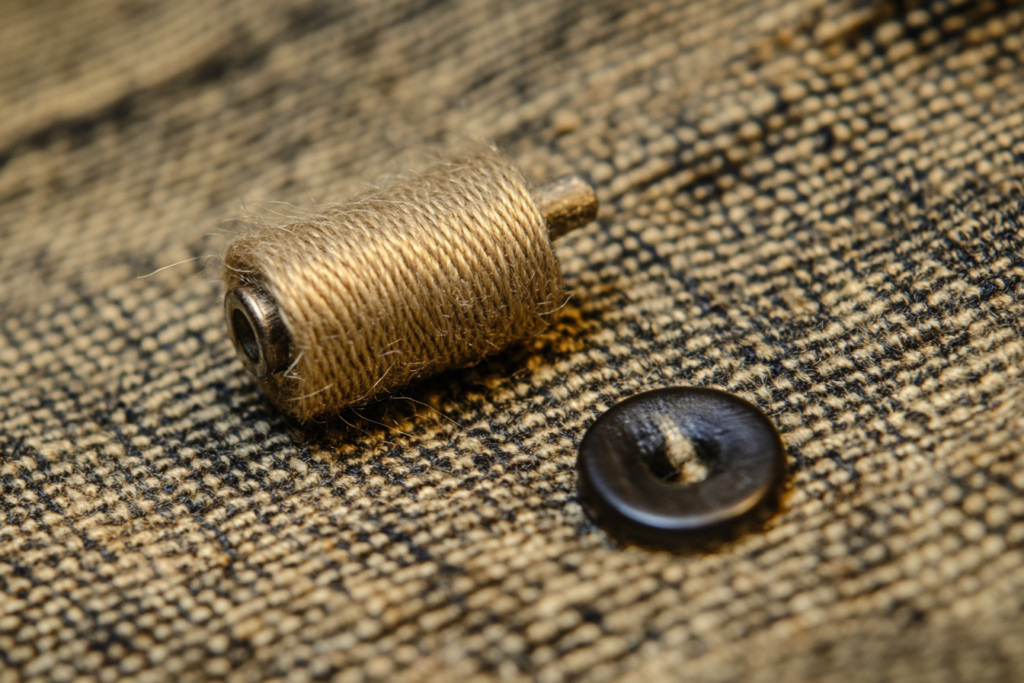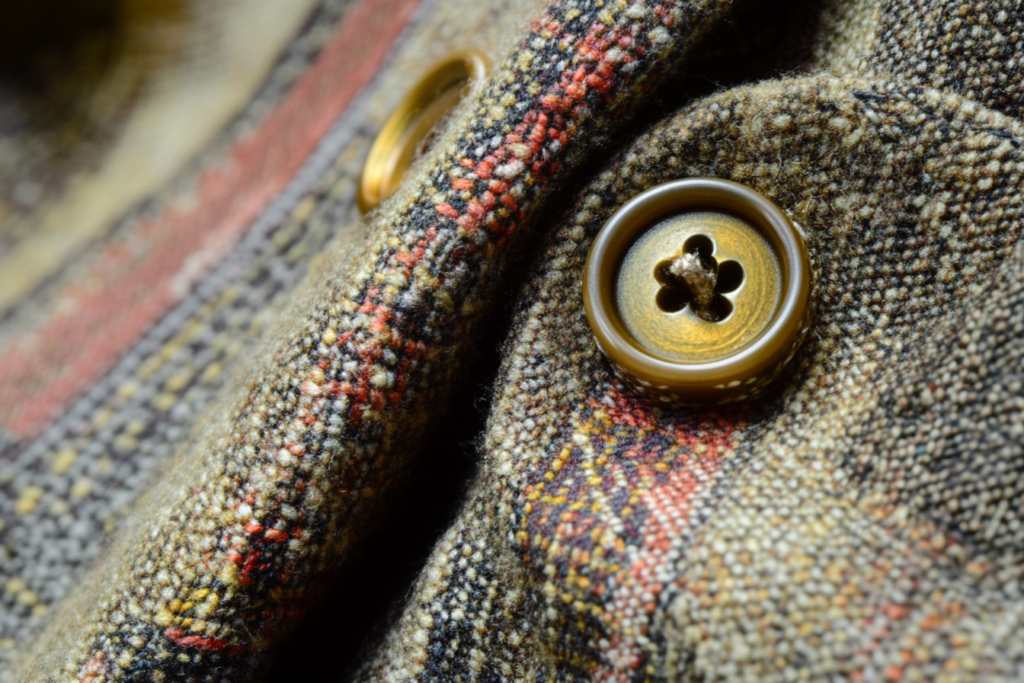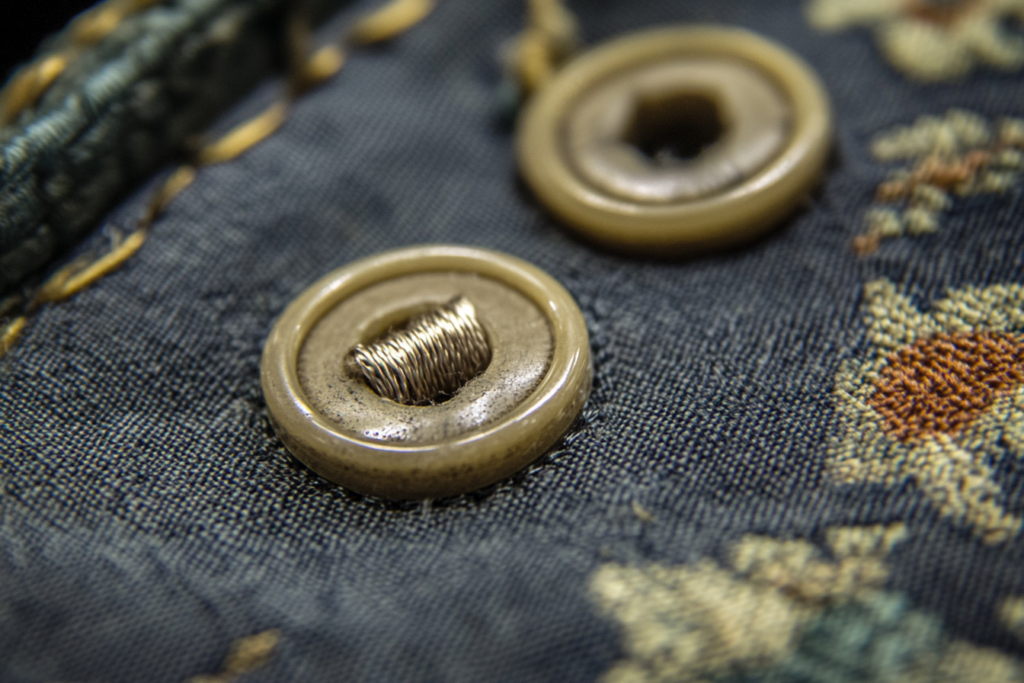Gimp: The Essential Thread for Reinforcing Buttonholes
Meta Description: Gimp is a soft thread used to strengthen buttonholes, ensuring durability and preventing fraying. Learn why it’s essential in garment construction.
What is Gimp in Sewing?
Gimp is a specialized soft thread or cord used in sewing to reinforce buttonholes, making them more durable and preventing fraying over time. It is typically stitched inside the buttonhole to add extra support, allowing the fabric to maintain its structure despite frequent use.
Gimp is particularly important for heavily used garments, such as coats, blazers, uniforms, and trousers, where buttonholes are subject to repeated fastening and unfastening. It enhances both the strength and appearance of buttonholes, ensuring they remain neat and functional throughout the garment’s lifespan.


Why is Gimp Used in Buttonholes?
1. Strengthens Buttonholes
- Gimp reinforces the edges of the buttonhole, preventing stretching and wear.
- It is especially useful for thicker fabrics like wool, denim, and heavy cotton, where buttonholes can weaken over time.
2. Prevents Fraying
- Buttonholes without reinforcement may fray with repeated use. Gimp secures the fabric edge, reducing damage from friction.
3. Improves Buttonhole Structure
- It helps maintain the shape of the buttonhole, ensuring that the opening remains intact rather than becoming misshapen.
- This is particularly important for tailored garments where precision and clean finishes are essential.
4. Enhances Aesthetic Appeal
- By providing a more defined edge, gimp gives buttonholes a professional, polished look.
- It ensures that the stitches lay evenly and don’t become loose or irregular.
Types of Gimp Used in Buttonholes
Different types of gimp threads are used depending on fabric weight, buttonhole size, and sewing method:
- Silk Gimp – Used in high-end tailoring and luxury garments, providing a fine, polished finish.
- Cotton Gimp – Common in casualwear, adding durability without stiffness.
- Polyester or Synthetic Gimp – Often used in mass-produced garments, offering a balance of durability and affordability.
- Thicker Corded Gimp – Ideal for heavy fabrics like wool coats and military uniforms, where buttonholes experience significant stress.
How to Sew a Buttonhole with Gimp
To reinforce a machine-stitched or hand-sewn buttonhole, gimp is inserted inside the stitching for added support. Here’s how:
For Hand-Sewn Buttonholes
- Cut a Piece of Gimp: The thread should be slightly longer than the buttonhole opening.
- Place the Gimp Along the Buttonhole Edge: Position it under the buttonhole stitches for reinforcement.
- Stitch Over the Gimp: Using buttonhole stitches, sew around the edges, ensuring the gimp is encased within the stitches.
- Secure the Ends: Knot the gimp at both ends to prevent unraveling.
For Machine-Sewn Buttonholes
- Thread the Gimp into the Machine: Some machines have a built-in gimp feature, which feeds the gimp cord through as the buttonhole is stitched.
- Sew the Buttonhole: The machine automatically encases the gimp, reinforcing the buttonhole as it stitches.
- Trim Any Excess Gimp: Cut any visible extra thread after the buttonhole is complete.
Which Garments Benefit Most from Gimp in Buttonholes?
Gimp-reinforced buttonholes are ideal for:
- Suits & Blazers: Ensures crisp, clean buttonholes that don’t fray.
- Coats & Jackets: Adds strength to buttonholes subjected to repeated use.
- Denim & Heavy Cotton Garments: Prevents fabric distortion around buttonholes.
- Uniforms & Workwear: Enhances durability for long-lasting wear.
Gimp vs. Regular Thread for Buttonholes
| Feature | Gimp Reinforced Buttonhole | Regular Thread Buttonhole |
|---|---|---|
| Durability | High – Resistant to fraying and wear | Lower – More prone to fraying over time |
| Structure | Keeps buttonhole shape intact | Can become loose or stretched |
| Aesthetic Appeal | More professional, defined edges | May have uneven stitching over time |
| Best for | Heavy fabrics, tailored wear | Lightweight fabrics, casual garments |
Conclusion: Why Use Gimp in Buttonholes?
Gimp is an essential tool in high-quality garment construction, providing extra durability, strength, and elegance to buttonholes. Whether used in hand-stitched tailoring or machine-sewn garments, it ensures that buttonholes maintain their shape, structure, and longevity. For those looking to create professional, long-lasting buttonholes, incorporating gimp is a must.



